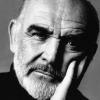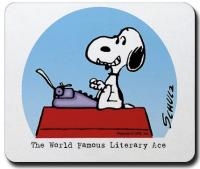Posted 24 December 2009 - 11:46 PM
In 2008 I watched all the Bond movies and wrote a series of reviews for another site.
The aim was to watch them in order in the run up to the premiere of QOS. I succeeded and the reviews were well received.
However, subsequently, I have re-read my reviews and re-watched a number of the movies (the BFI had a whole 007 season earlier this year and I saw quite a few on the big screen again!).
This is my updated review for From Russia With Love.
FROM RUSSIA WITH LOVE
REVISED REVIEW 23/12/09
When James Bond returned to the screen in 1963, it was with a smarter, slicker product. The fumbling of Dr No was replaced with the confidence born out of success. Where as one of the problems with Dr No was the performance of Sean Connery, in From Russia With Love it is Connery who carries the film, responding to his co-stars and feeding off their evident enthusiasm.
For the most part the film is faithful to Fleming’s novel, even to the point of introducing all the villains and the plot device in the first fifteen minutes, and it is much better for it, as From Russia With Love is one of Fleming’s and the film franchise’s crowning achievements. The novel spent time dissecting its characters and the film utilises the physical and psychological descriptions excellently. Hence we have Pedro Armendariz’s boisterous, chauvinist family man Kerim Bey, running his Turkish headquarters from the back of a carpet sellers in the bazaar. We have the beautiful, impressionable ex-ballerina Tatiana, played effortlessly by debutant Daniela Bianchi, who falls in love with Bond and the freedom of the Western world. We have the gruesome Rosa Klebb, the blonde killer Grant and the wily planner Kronsteen. As inhabited by Lotte Lenya, Robert Shaw and Vladek Sheybal these are a formidable trio of villains who bring menace and intrigue in equal measure.
Robert Shaw in particular excels as the almost mute hit man, whose sole purpose in life is the destruction of others lives. He is brilliant impersonating Captain Nash and swapping lines with Connery in the claustrophobia of a sleeping carriage, where his bulk and presence seems to fill the screen. Also there is a tiny scene when, having killed a man, Shaw is being congratulated by Lenya; his eyes are fully closed as she patters on, seemingly oblivious to everything but the havoc he can cause. More than anyone, Shaw is the template for many Bond villains to come.
In addition a whole plethora of background characters lend colour and vibrancy to the film. There are Kerim’s sons, a pack of gypsies, several lesser villains (particularly Krilencu, a Bulgarian killer who is shot escaping from his apartment through the mouth of Anita Ekberg) and even the re-appearance of Sylvia Trench, who Bond still can’t spend any length of time with. Our introduction to the head of SPECTRE is disappointing. Seen only from behind, he has an interesting speech about the merits of Siamese fighting fish, but other than that the appearance of SPECTRE is wasted and serves, as in the previous Dr No, only to deflect the mark of villainy from the Eastern Bloc.
While the characters keep the story alive, the action keeps it moving. Terence Young takes Maibaum’s script and delivers a true British spy thriller, in the tradition of The Third Man and The Lady Vanishes. We have colourful locations, beautifully photographed by Ted Moore; excellent sets, designed in a minimal style by Syd Cain; a chase with an overbearing helicopter; a flight to freedom on a train; and several delightful rendezvous: on the Bosporus, at the St Sophia mosque, a gypsy camp and in a moonlit hotel bedroom. The final of these reveals both the lengths the producers were prepared to go to retain Fleming’s vision and how far they couldn’t. The filming of Bond and Tatiana’s love making is included, while the best line in the novel (“This” - Tatiana tells Bond she is naked except for her lace choker) is excluded.
There is a lot of action in From Russia With Love and it reaches its climax on board the Orient Express, where Bianchi brings to life her character’s qualities, at first gay and carefree, besotted with Bond and relishing her new opportunities, then later sullen and awkward as she realises the tide has turned against her. Connery is good here too, bringing the ruthlessness and violence of Bond back to the forefront. Bond’s battle with Grant is a movie highlight, no Wild West pastiche this, a full blooded encounter in which both protagonists end up sullied and scarred, though only one is dead. Mercifully John Barry’s generally intrusive music score is subdued during this struggle to the death and the roar of the locomotive seems to mimic the chaos on screen.
Finally, or formerly, the title sequence, one of the great Bond innovations. A five minute teaser in which we see “Bond” killed by his potential assassin, followed by the credits projected onto the curves of a belly dancer. If there is any indication of how confident Broccoli and Saltzman had become, this was it. In an era where big music themes and credit picture boards were still in evidence – witness My Fair Lady and Dr Zhivago the very next year – this truly was something to remember. So confident were the producers, they even tell us James Bond will be back in “Goldfinger”.
RATING - 10 from 10








